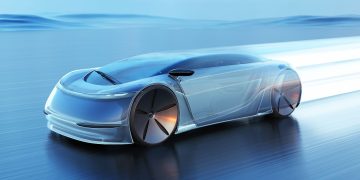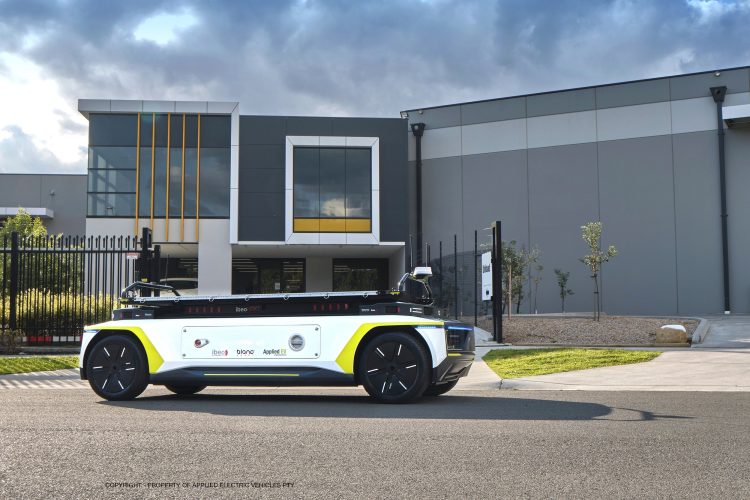Introduction: The Intersection of Autonomous Driving and Electric Vehicles
The future of the automotive industry is being shaped by two transformative technologies: electric vehicles (EVs) and autonomous driving. Each of these innovations promises to redefine the way we think about mobility, sustainability, and convenience. While both technologies have the potential to revolutionize transportation independently, the convergence of EVs with autonomous driving technology presents an exciting frontier for the automotive sector. This article will explore how autonomous driving features, when integrated with electric vehicles, can impact the automotive industry, enhance consumer adoption, and contribute to the broader shift towards sustainable, smart transportation.
The Rise of Electric Vehicles: A Foundation for Innovation
Before diving into the potential impact of autonomous driving, it’s important to understand the current state of electric vehicles. Over the past decade, the EV market has experienced rapid growth, driven by technological advancements, environmental concerns, and shifting consumer preferences. EVs are becoming more affordable, with longer ranges and faster charging capabilities, making them increasingly viable alternatives to traditional internal combustion engine (ICE) vehicles.
Governments and regulatory bodies are playing a significant role in encouraging the adoption of electric vehicles through subsidies, tax incentives, and stricter emissions standards. As a result, the automotive industry is witnessing a major shift towards electrification, with established manufacturers and new entrants alike committing to electric vehicle production. This transformation is not only reducing dependence on fossil fuels but is also helping to mitigate the environmental impacts of transportation, such as carbon emissions and air pollution.
The rise of EVs lays the groundwork for the introduction and widespread adoption of autonomous driving technology. In fact, many of the features that make EVs an attractive option for consumers—such as their quiet operation, energy efficiency, and reduced maintenance needs—align well with the advantages of autonomous vehicles. As the two technologies converge, the automotive industry is poised for a major disruption.
Autonomous Driving Technology: A Game-Changer for Mobility
Autonomous driving technology has been evolving at a rapid pace, with major automakers and technology companies investing heavily in the development of self-driving systems. The goal is to create vehicles that can navigate and operate without the need for human intervention, using a combination of sensors, cameras, radar, and advanced algorithms to make real-time decisions about steering, braking, and acceleration.
At the core of autonomous driving is the concept of full autonomy, often categorized into levels from 0 to 5, as defined by the Society of Automotive Engineers (SAE). These levels range from Level 0 (no automation) to Level 5 (full automation). Most current self-driving systems, such as those found in Tesla’s Autopilot, are at Level 2 or 3, which still require human supervision and intervention. However, the ultimate goal is to achieve Level 5 autonomy, where a vehicle can drive itself without any human input in all conditions.
The integration of autonomous driving technology with electric vehicles offers several advantages that could reshape the future of transportation. Let’s explore how this intersection can benefit both consumers and the automotive industry.
Synergies Between Electric Vehicles and Autonomous Driving Technology
1. Efficiency and Cost Reduction
One of the key benefits of integrating autonomous driving features with electric vehicles is the potential for greater efficiency in the transportation system. Autonomous vehicles can optimize driving patterns, reduce energy consumption, and increase the overall efficiency of EVs. For instance, autonomous EVs can use data from their onboard systems to anticipate traffic conditions, adjust speed accordingly, and minimize energy waste, leading to longer ranges on a single charge.
Additionally, autonomous driving technology can reduce the wear and tear on vehicles by optimizing driving behavior. EVs, which already have fewer moving parts than traditional vehicles, stand to benefit even more from this feature, as it will further reduce maintenance costs and increase the lifespan of the vehicle. By reducing fuel consumption and lowering maintenance expenses, autonomous EVs could ultimately lead to a more affordable and sustainable transportation solution.
2. Improved Traffic Flow and Urban Mobility
When combined with autonomous driving, electric vehicles have the potential to transform urban mobility by reducing traffic congestion, optimizing traffic flow, and making more efficient use of road infrastructure. Autonomous vehicles can communicate with each other and the surrounding infrastructure, such as traffic lights and road signs, to make real-time decisions about route planning and speed adjustments. This can help reduce traffic jams, lower travel times, and alleviate the strain on urban transportation systems.
Moreover, autonomous EVs can be integrated into shared mobility solutions, such as ride-hailing and car-sharing services, which would further optimize the use of electric vehicles in urban areas. With fewer cars on the road and more efficient travel patterns, cities could experience reduced congestion, lower pollution levels, and enhanced overall quality of life for residents.

3. Safety and Reduced Accidents
The safety benefits of autonomous driving technology are often highlighted as one of its most significant advantages. Human error is responsible for the majority of road accidents, but autonomous vehicles have the potential to eliminate many of these errors by relying on advanced sensors and algorithms to make decisions with greater precision and speed than human drivers.
When combined with electric vehicles, autonomous driving technology can further enhance safety by enabling features such as automatic emergency braking, collision avoidance, and lane-keeping assistance. EVs, which are already known for their quiet operation and smoother ride, would provide an even more controlled and predictable driving experience when coupled with autonomous systems. This could lead to fewer accidents, reduced injuries, and improved public safety.
4. Environmental Benefits: Reduced Emissions and Energy Consumption
Both electric vehicles and autonomous driving technology are contributing to the fight against climate change. EVs reduce reliance on fossil fuels and decrease carbon emissions, while autonomous vehicles can optimize driving behavior to reduce energy consumption and improve fuel efficiency.
Autonomous EVs can further amplify these environmental benefits by reducing energy waste. For example, by utilizing efficient route planning, vehicles can avoid congested areas, optimize acceleration and braking, and drive at consistent speeds, all of which contribute to lower energy usage. In addition, the ability of autonomous vehicles to communicate with smart grids and infrastructure could allow for better coordination of charging and energy distribution, ensuring that electric vehicles are charged when the grid has excess renewable energy, such as during periods of high solar or wind production.
5. Consumer Adoption and Perception
The integration of autonomous driving features into electric vehicles has the potential to increase consumer adoption, especially among those who are hesitant to embrace EVs. The promise of autonomous driving, coupled with the benefits of EVs, could attract new customers who value convenience, safety, and sustainability.
Consumers are increasingly looking for cars that not only reduce their environmental impact but also offer cutting-edge features and enhanced driving experiences. Autonomous driving technology adds a layer of innovation and convenience to electric vehicles, making them more appealing to tech-savvy consumers who prioritize the latest advancements in mobility.
Additionally, the availability of autonomous features in electric vehicles could help address concerns around driving range and charging times. By providing drivers with the option to engage autonomous systems in specific driving scenarios—such as highway driving or traffic-heavy areas—EV owners could benefit from increased convenience and reduced stress during daily commutes.
Challenges in the Integration of Autonomous and Electric Vehicles
Despite the promising synergies between autonomous driving and electric vehicles, there are several challenges to overcome before the widespread adoption of autonomous EVs becomes a reality. These challenges include:
1. Technological Hurdles
While autonomous driving technology has made significant progress, there are still numerous technical challenges to address. Achieving full autonomy requires significant advancements in artificial intelligence, sensor technology, and machine learning algorithms. The integration of autonomous systems into electric vehicles also requires improvements in battery performance and charging infrastructure to support the high demands of both technologies.
2. Regulatory and Legal Issues
The adoption of autonomous vehicles will require new regulatory frameworks and legal structures to ensure safety, liability, and insurance coverage. Governments will need to establish clear guidelines for autonomous vehicle testing, certification, and operation. Additionally, as electric vehicles become more prevalent, regulations around EV infrastructure, such as charging stations and grid capacity, will need to be updated.
3. Public Trust and Acceptance
Consumer acceptance of autonomous driving technology remains one of the biggest hurdles. Many people are still wary of fully autonomous vehicles, particularly when it comes to safety and reliability. Manufacturers will need to demonstrate that autonomous EVs can be as safe, if not safer, than human-driven vehicles. Educating the public on the benefits and capabilities of autonomous EVs will be crucial to achieving widespread adoption.
Conclusion: A Revolutionary Future for Electric Vehicles
The integration of autonomous driving technology with electric vehicles holds immense potential for transforming the automotive industry and the way we think about transportation. By combining the environmental benefits of EVs with the safety, efficiency, and convenience of autonomous driving, this convergence promises to reshape the future of mobility.
As both technologies continue to evolve and mature, the automotive industry will face new challenges and opportunities in developing smarter, more sustainable transportation solutions. The combination of autonomous driving and electric vehicles has the potential to create safer roads, reduce energy consumption, and improve urban mobility, ultimately contributing to a more sustainable and efficient future.











































